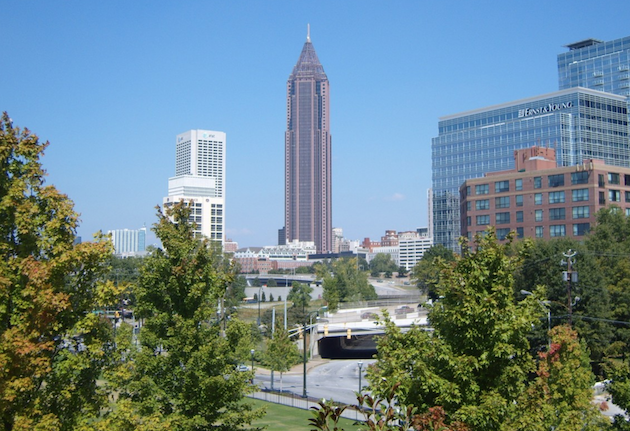China’s Shenyang is traditionally an industrial city, but when work began in 2010 to develop its
Shenyang has now been internationally recognised by the United Nations and others for its work, with widespread recognition that this sort of green planning can have a range of social and physical health benefits for residents. But it may also have a profound impact on mental health.
For many years scientific studies have shown a higher prevalence of mental illness amongst urban populations than rural ones. But it is unclear why. The possibility that people with mental illnesses are more likely to move to cities has been more or less ruled out.
In seeking to solve the puzzle, researchers have tended to focus on whether there is something specific about city environments which increases the risk of mental health. But a new study from Aarhus University in Denmark has turned that question on its head, focusing instead on the specifics of rural environments — namely green space and vegetation.
Why green space?
“If you found this connection [between rural environments and better mental health], you could go in and change city environments,” explained Danish biologist Kristine Engemann Jensen, lead author of the Aarhus study. “If it leads to strong health benefits, maybe it’s something we should be prioritising when we’re planning our cities”.
In what is believed to be the largest ever investigation into the relationship between green space and mental health, the researchers combined satellite imagery with detailed demographic data from almost a million Danes in the Danish Civil Registration System.
Such a large and rich dataset meant they could account for other factors which previous smaller studies have been unable to include — such as socio-economic status and family history, said Engemann Jensen. “We can prove our findings are not just something from a small subset of the population, but the same pattern repeating across the entire population,”she said.
Mapping the risk of 16 adult mental health disorders against the amount of green space surrounding childhood residences, the researchers identified a pattern: children growing up with less green space around their home would have an increased risk of psychiatric disorder later in life.
“The costs of treating mental ill health are high, and expected to rise as more people migrate into cities”
For Engemann Jensen, these findings have significant real world impacts. She hopes, thanks to its scale, that the study can be used to make economic calculations which weigh up the immediate profits from urbanising green spaces in cities against the long-term savings in mental health treatment costs.
While the instinct is often to generate immediate turnover by using available space for commerce and retail, the costs of treating mental ill health are also high, and expected to rise as more people migrate into cities. These are costs which could be vastly reduced with investment in green space.
And while she emphasises the need for further study into the particular qualities of beneficial greenery — guidance often puts disproportionate emphasis on the distance between green areas, for example, which is not backed up by evidence — she advises governments to produce their own guidelines on access to green spaces in residential areas.
Lessons for policymakers
The World Health Organisation (WHO) has previously called for similar action after carrying out a review into the relationship between access to green space — at any point in life — and a number of health factors.
A toolkit produced by the WHO provides resources to measure the number of people with access to green space and identify opportunities for increases. Pilots in Kaunas, Lithuania; Utrecht, Netherlands; and Malmö, Sweden demonstrate how the benefits of green space can be achieved for urban residents.
In South Australia, the government in 2016 brought together a range of stakeholders including government departments, the Australian Institute of Landscape Architects and the Heart Foundation to produce an action plan for green spaces in urban settings.
The plan cites mental health benefits and calls for “Quality Public Open Space Guidelines” for planners and developers, pointing to the increasing urgency of such measures as population density increases in the coming years.
While this type of collaboration and demographically-grounded work is welcome, Engemann Jensen points out that it has to be done carefully. Greening neighbourhoods can also be caught up in wider regeneration programmes which ultimately serve to make an urban area not only more appealing but also more expensive, driving out existing residents.
In Singapore, recent studies have found an increase in house prices related to managed vegetation in surrounding areas. That’s a particularly concerning finding, said Engemann Jensen, when you consider that it is often those from lower socio-economic backgrounds who will benefit most from green space.
If poorer populations are simply pushed out of greener areas by increased costs, the cycle of poor mental health continues.
And while this study focuses on the homes in which children grow up, it is also important for policy-makers and city planners to consider the other spaces in which they spend their time, said Engemann Jensen.
Childcare and educational facilities, for example, should be similarly addressed in guidelines and other policy developments relating to access to green space.
Overall, though, Aarhus University’s study provides a large body of evidence for a link between childhood green space and adult mental wellbeing.
Engemann Jensen hopes that policy-makers will act accordingly: “I hope our study can give a bit of value to green space and show it’s not just an aesthetic part of the city that’s lost, but that you could actually gain in the longer perspective” she says.
“You get that investment back by making a better, healthier city environment”.
This piece originally appeared on Apolitical, the global network for public servants. You can find the original here.

